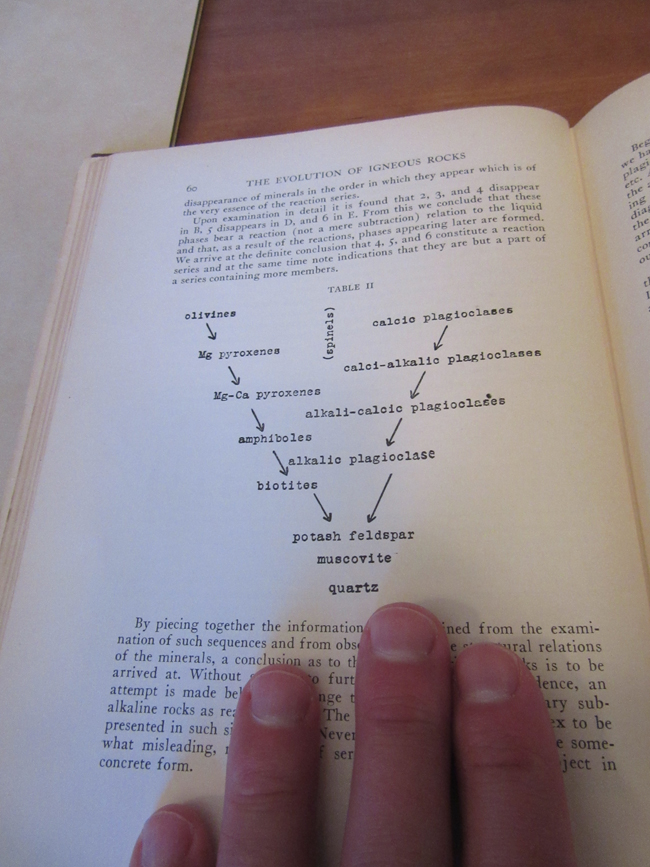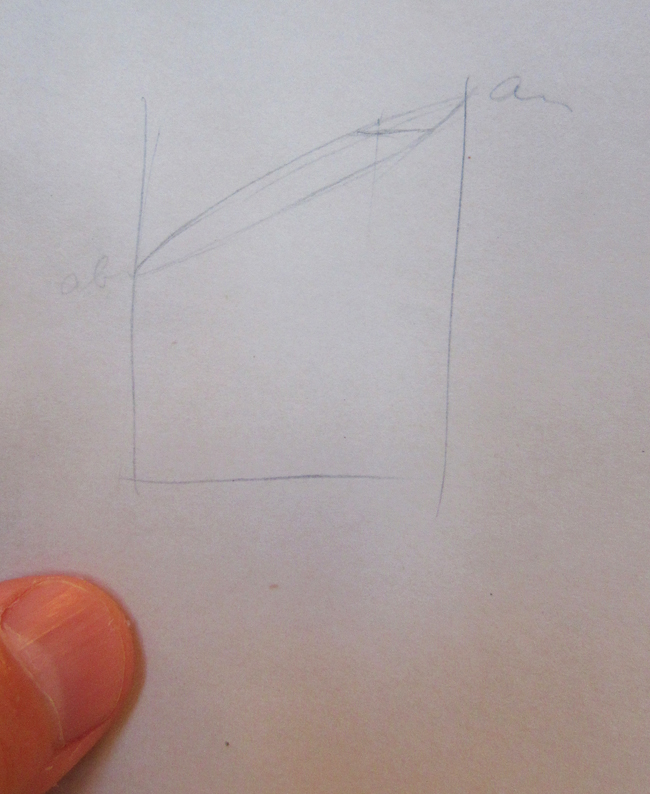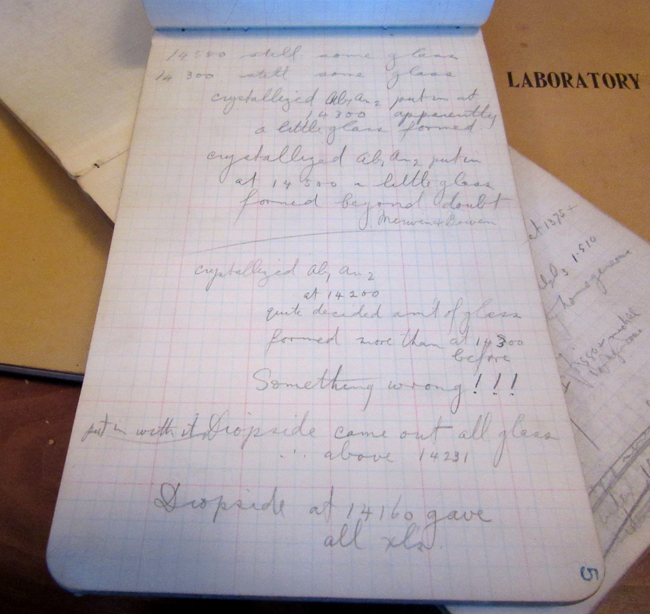I got a special treat the week before last – one of my students this semester works at the Geophysical Laboratory of the Carnegie Institution in Washington, DC. During our unit on igneous rocks, he was prompted by the “Bowen’s reaction series” discussion to let me know that Norman Bowen’s notebooks were still extant at the Carnegie. He invited me down to check them out, and I readily accepted.
Here’s Bowen, in the field a century ago, sampling rocks:

Among the documents I got to examine during my visit was this first edition of Bowen’s book The Evolution of the Igneous Rocks:

Inside is a diagram that every introductory geology student will recognize:

Inside the front cover of this same book, you can see Bowen inscribed it to Hat Yoder, and a copy of Bowen’s obituary is tucked behind a portrait of him:

Norman Bowen’s degrees: Bachelor’s and PhD:

… and a master’s degree, too:

I also was privileged to examine Bowen’s experimental notebooks:

Here’s Bowen’s notebook on plagioclase, for instance:

Open it up, and here’s what you see:

Did you catch the diagram sketched out at the top of that page? It’s the plagioclase solid solution, from Ab (albite) on the left to An (anorthite) on the right, showing composition of solid and melt (on the horizontal axis) as melt cools to make solid rock. The vertical axis is temperature. Petrology students will be keen on this one (or maybe not):

This simple sketch is foundational to understanding the compositional evolution of an evolving magma/rock system.
I love this one: “Something wrong!!!”

More…

This one is labeled “Sinking Crystals”:

Inside, there is this:

Once crystals of minerals such as olivine form in a cooling magma, they may sink to the bottom of the magma chamber (in this case, the artificial magma chamber) because they are more dense than the surrounding melt and form a cumulate layer. Knowing this is key to understanding how the Stillwater Complex in Montana formed, or why the Palisades Sill along the Hudson River in New Jersey is 25% olivine by volume at the bottom, but only 1% at the top.
Much of what we understand about igneous rocks was first worked out by Bowen, doing experimental work at the Carnegie. Geoscience owes him a huge debt.


Very cool, Callan! I recently visited Carnegie but had no idea that Bowen’s papers were there. I’ll have to check them out next time I visit!
I would like to know if there are notes of Bowen’s work from mapping lake Abitibi 1907-1909
on material that was published by Ontario Department of mines .I own the properties and am conducting a compilation of previous work. I was impressed with the excellent description and the petrographic description of the various outcrops. It was pointed out to me that I am very fortunate to have such a great person at age 21 map the area while attending Queen .His masters may have research and I am having a copy traced .